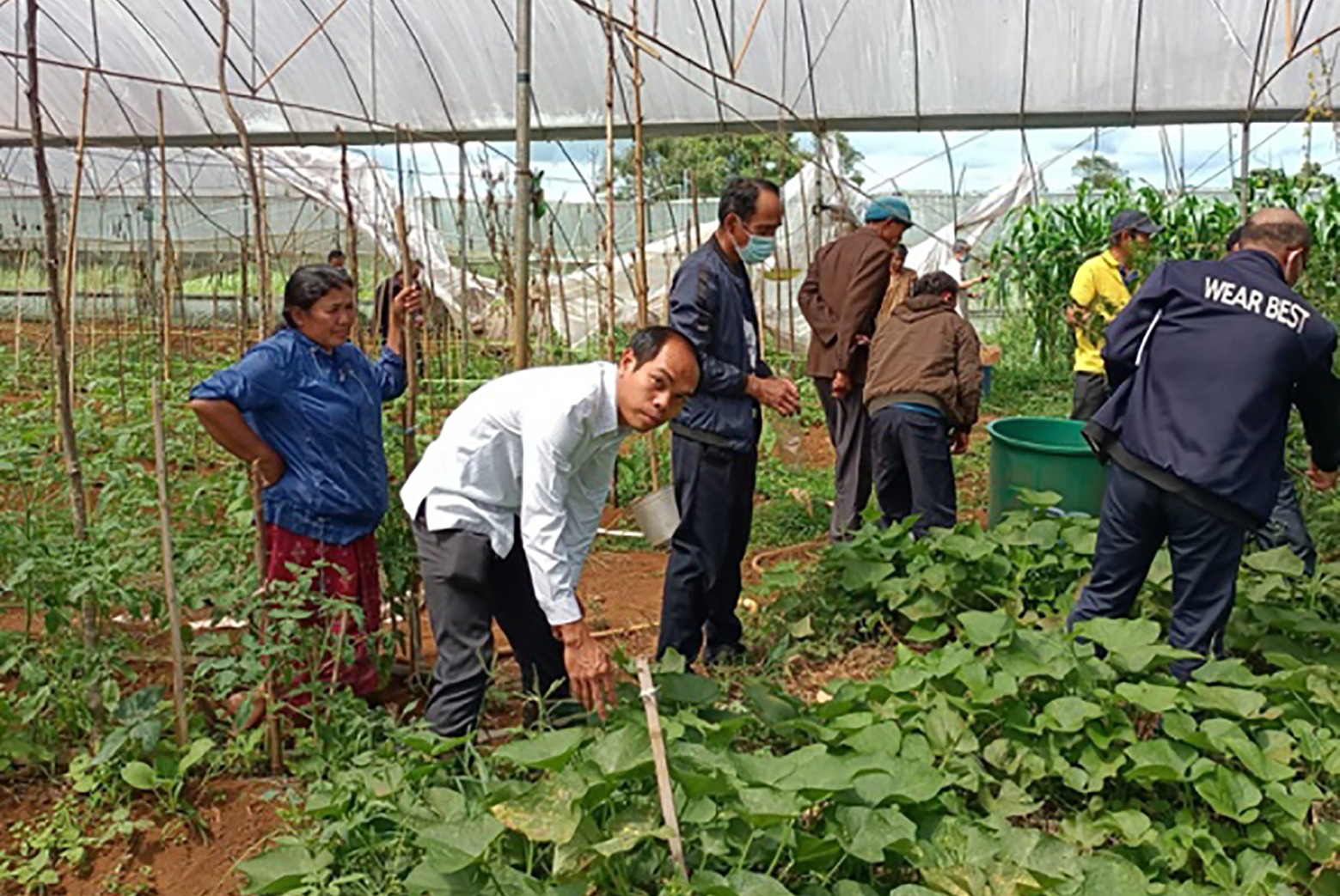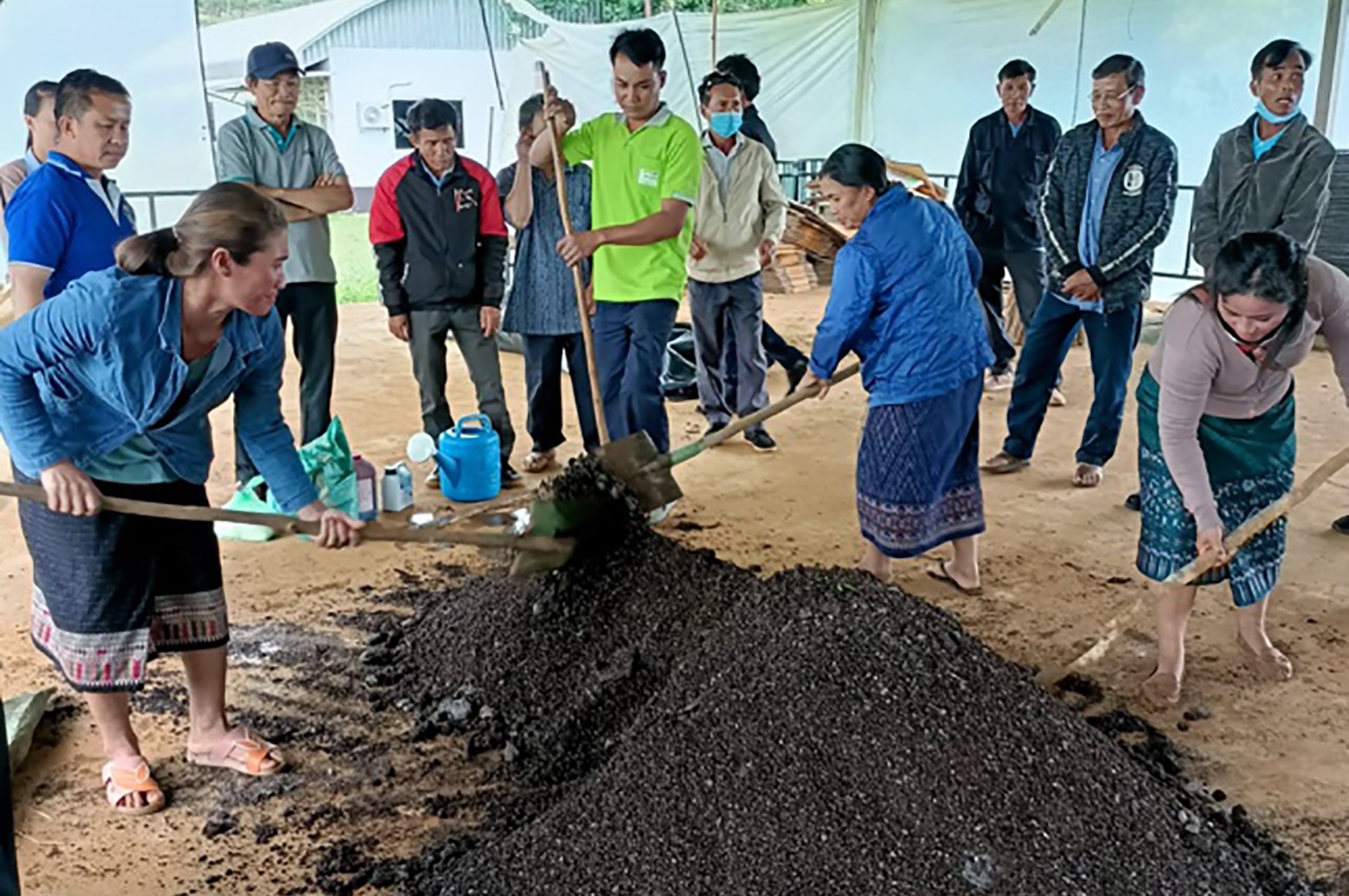

Crop Protection by WhatsApp in the COVID-19 Era
August 12, 2021

For over 12 years we have had an active mentoring program in Laos and we are so pleased to report that the work continues in the COVID-19 era.
Remote mentoring by WhatsApp and Instagram has enabled Crawford Fund e-mentors to maintain crop disease and pest diagnostics support for provincial staff and smallholder farmers in Champasak province, southern Laos, during the pandemic.
The remote mentoring has been led by former Australian Volunteers Program volunteer Jillian Lyall (who reported on her in-country experience here, with a related NextGen video) and Professor Lester Burgess, with backup from over 40 other Crawford Fund e-mentors.
“These mentors have a detailed knowledge of southern Laos through involvement in the Crawford Fund’s capacity building program in crop disease and pest diagnostics and in Integrated Disease and Pest Management, initiated in 2009. This background knowledge has been crucial to the success of the remote mentoring,” reports Lester.
The key mentee is Mr Viengvilay Vorlachith (Vieng) and the Crawford Fund has provided support to enable Vieng to maintain disease and pest surveys in cassava and vegetable crops and respond to smallholder farmers’ requests for advice. Vieng also includes his colleagues in the field work.

In a report to our NSW Committee, Lester and Jillian reported that Vieng has provided a detailed plan of each survey and then discussed his findings with them.
Jillian and Lester have maintained weekly (often daily) contact with Vieng via phone calls and text messages, and he has sent over 150 pictures via WhatsApp. Many of Vieng’s pictures have been posted on the special Instagram account at Crawfordfundlaos and their collaboration has helped with the identification of diseases and disorders including Rhizoctonia root and collar root, and tip burn in cabbage (Ca deficiency).
“In June, Vieng found clubroot of cabbages on the Bolavan plateau, a first report for the region. This was diagnosed via pictures on WhatsApp, and timely advice provided at our end. Clubroot, the scourge of crops in the cabbage family, is caused by a pathogen that survives in soil,” reported Lester.
Vieng also had a key role in organising a workshop sponsored through a national project on vegetable production, composting, and disease and pest management for smallholder farmers and district staff at the Provincial Agricultural and Forestry Office teaching centre on the Bolavan plateau.
Jillian Lyall has been working with Vieng to assist in the development and implementing of the pest and disease surveys.
“Vieng has conducted a number of surveys this financial year. Our primary focus was on cassava to begin with as it is pertinent to the area with localised incursions of Cassava Mosaic Disease from adjacent countries. We were able to connect Vieng to Dr Jonathan Newby from the International Center for Tropical Agriculture (an Australian specialist who is project leader on a related ACIAR project) who provided specific mentoring and support. Vieng has also undertaken a comprehensive vegetable survey, finding disease and insect damage,” reported Jillian.
Dr Burgess explains the mutual benefit of this work.
“The outcomes have contributed to the knowledge legacy that has been gradually developed over the past 12 years of continuous engagement with Lao PDR. Our current indirect engagement with smallholders has provided further information on local diseases and pests, and low-cost practices that help reduce losses in yield and quality. This impact improves incomes so contributing to poverty alleviation. We have contributed to professional capacity building of Vieng and other Champasak PAFO and DAFO staff.”
“Our program has contributed to NSW through the involvement of DPI staff in diagnostics research in-country and in Australia especially with exotic diseases and pests. This professional capacity building has included publications and improvements in detection methods for exotic pathogens,” reported Lester.




 0
0